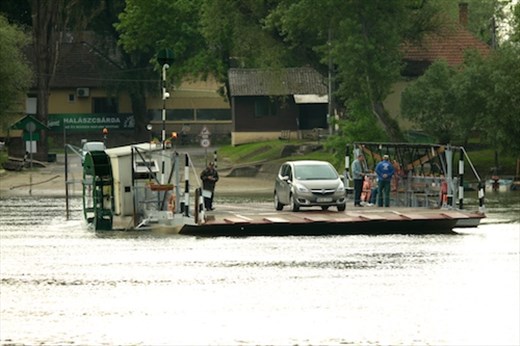SANDOR HAS THE BIRDS OF HORTABAGYI National Park wired. More importantly, he has the 4WD Toyota pick-up to squish through the wet fields to where they live. Hortabagyi sits on the western edge of the “steppe,” the same one that stretches all the way to Mongolia, and much of it is wetlands. But as we have learned, “national park” doesn’t mean the same in the US as it does in other countries where farming, grazing, logging and other unnatural acts are permitted.

Waiting for the Robert E Lee
A single day of commuting from Miskolc was enough to convince us to seek lodging nearer to the park. The roads were a crazy quilt of asphalt patches through 30 mph villages and we had to wait for half an hour for the ferry’s single paddle wheel to take us across a bridge-less river.

Great bustards strutting their stuff
Hortabagyi is a major stop for migratory birds, a haven for raptors of all sorts and a breeding area for our target, the great bustard. Mating season is over, the dominant cocks have finished their courtship dances and have done the deed. But some of the younger males didn’t get the memo or maybe they are just practicing for their turn at bat. Sandor drove us to where they were strutting their stuff — well, not exactly to “where.” As good as my camera and lens are, photographs taken from 500 meters away — as near as we dared approach — leave much to be desired. The bustards looked much more impressive through Sandor’s 40X spotting scope.

Hungarian grays with bells on
Hortabagyi is also home to the Hungarian gray, or steppe, cattle, a rare and ancient breed and the herdsmen — also a rare and ancient breed — who watch over them. There are also ever increasing herds of wild Mongolian horses imported from the northern steppe and left free to re-populate the park. So with our birding out of the way we made a final stop on our way back to Budapest at the charming World Heritage town of Holloko with its well preserved traditional houses. A great finish to our stay.

Tradional house, Holloko World Heritage Site